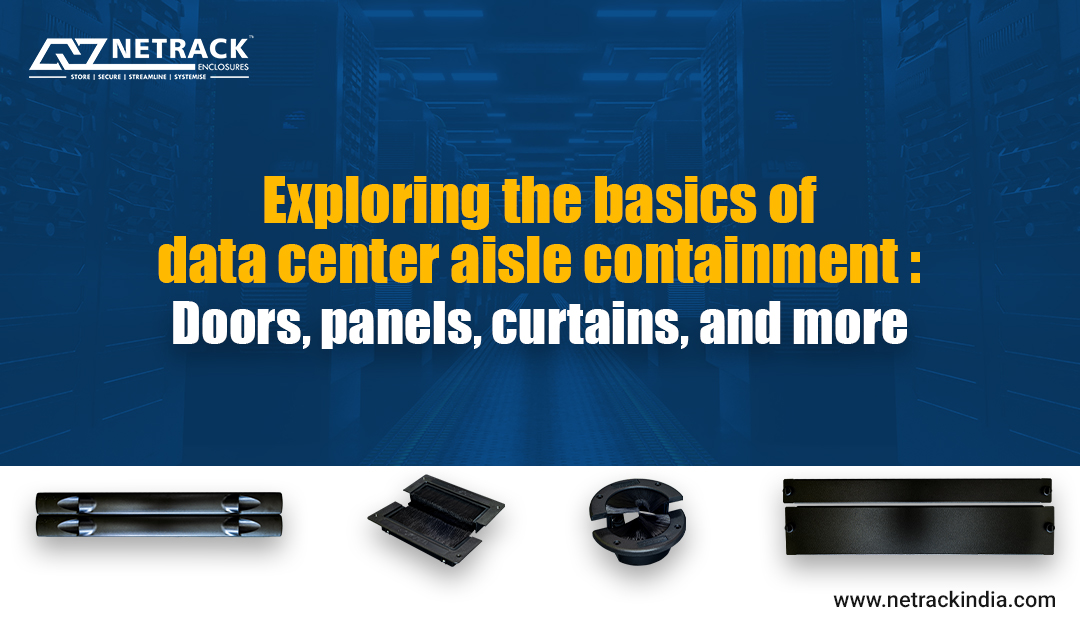
Exploring the basics of data center aisle containment: doors, panels, curtains, and more
Exploring the basics of data center aisle containment: doors, panels, curtains, and more
Data centers are vulnerable to damage of any mission-critical equipment or server downtime due to inefficient Air Flow management. It impacts the business’s credibility and causes a financial burden for the organization.
Data center challenges
Data centers consist of servers, PDUs, and other various mission-critical equipment that operate 24/7 to support the organizational workflow. Hence these servers and equipment generate immense heat causing electrical short circuits and the data center temperature to rise. Additionally, poor ventilation or inefficient airflow management reduces the data center’s cooling capacity, resulting in fire outbreaks. Therefore, considering all the above, creating a long-term solution to monitor and control the temperature within the data center ecosystem is essential.
Aisle containment: A cooling solution!
Data center aisle containment is critical in ensuring sufficient cooling of the data center. It improves overall airflow management by preventing hot and cold air mixing. This is possible through the efficiency of the data center aisle containment design, where the rack enclosures are placed in rows facing each other to form a cold aisle while the back faces the rear of different cabinets to create a hot aisle. These aisle containments are specially designed to ensure that the cold air is circulated within the cold aisle while the hot air is vented out through the exhaust. Both hot and cold-aisle containment systems have advantages as well as disadvantages.
The Cold Aisle Containment (CAC) solution ensures a uniform and continuous flow of cold air through the air inlet ducts and perforated floor tiles in front of the rack cabinets to the equipment. In addition, the CAC solution has a ceiling panel above the aisle to contain the cold air. The sealing of CAC prevents hot air from entering the server and mixing with the cold air. As a result, this solution is effective and less expensive.
However, the Hot Aisle Containment (HAC) solution, on the other hand, the Hot air is contained by placing the Rear side of Rack rows face to face and making a containment.
Netrack recommend to design CAC If the rack quantity is more with larger Data hall, while HAC will be more suitable for smaller Data Hall and lesser racks.
Netrack’s contribution to increasing aisle containment efficiency
- The structural design of the aisle containment system with segregated rows of racks and cabinets minimizes the mixing of hot and cold air.
- Customized blanking panels are used to fill the space where racks are missing. The panels prevent airflow to the unused racks spaces to avoid thermal short-circuit in the data center.
- As a cost-efficient solution, vertical curtains composed of flexible strips also help separate the cold and hot aisles. The strips are placed overlapping to create an efficient barrier to prevent the hot and cold air from mixing. But one has to ensure the material used are UL90 certified
- Depending upon the space in the data center, can use single or double doors with hinges or sliding options towards the end of the aisles to ensure thermal efficiency.
- Manual opening and auto closing doors are installed to ensure the Containment doors are closed at all times, in some installation there are usage of Auto doors with proximity sensors to open and close the Containment door.
A data center is built based on its function and scaling requirements. Hence, Netrack customizes the data center aisle containment solutions to cater to clients’ varied needs to enhance the data center’s efficiency.




